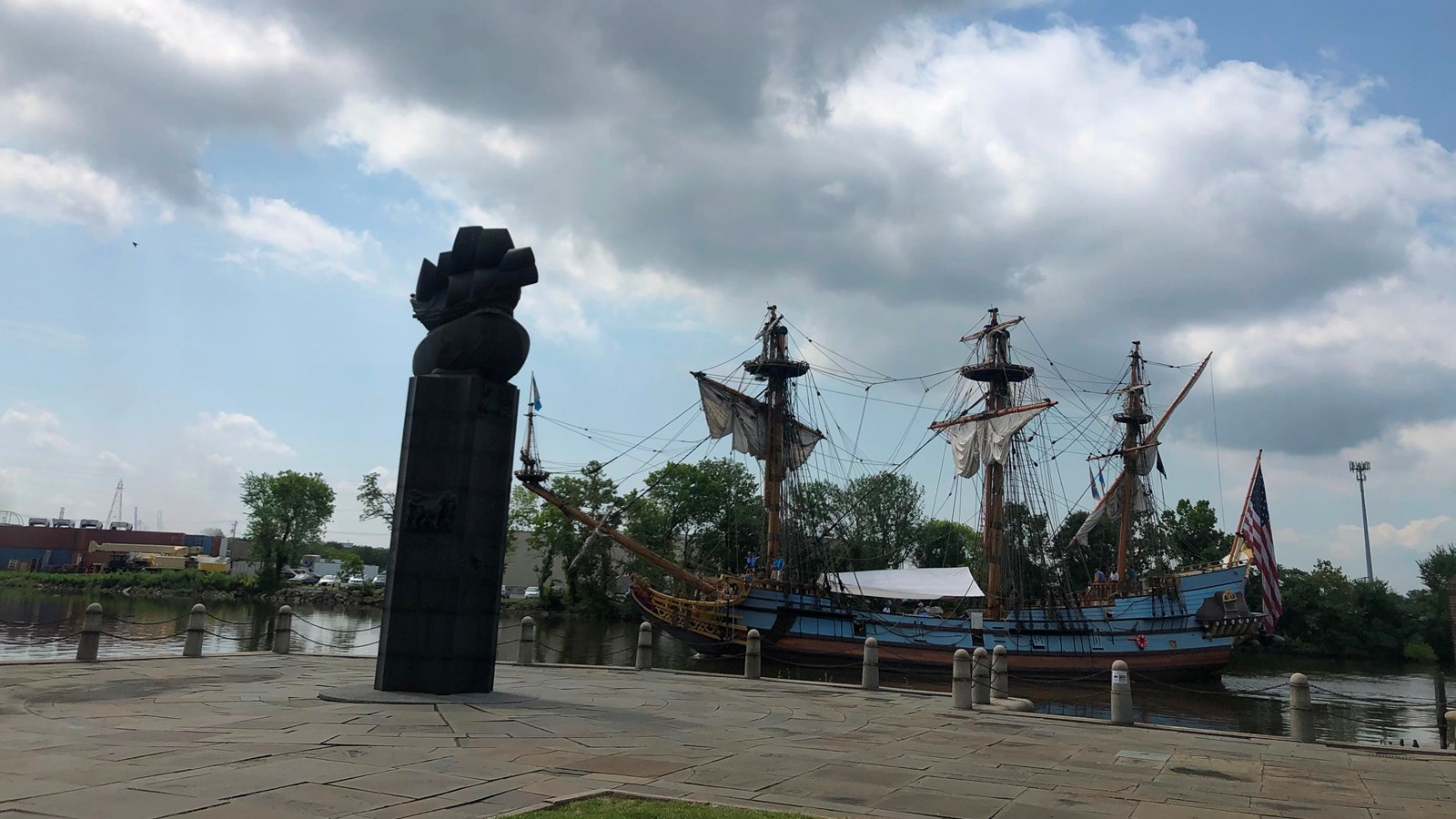Place
Fort Christina & The Rocks

NPS Photo
Benches/Seating, Bicycle - Rack, Cellular Signal, Information, Information - Ranger/Staff Member Present, Parking - Auto, Picnic Shelter/Pavilion, Scenic View/Photo Spot
It was here at The Rocks, in 1638, along the banks of the Christina River over 380 years ago, that the first Swedish and Finnish American settlers aboard the Kalmar Nyckel and the Fogel Grip landed. The wharf of rocks is all that remains of the first landing.
After the Swedes purchased land from the Lenape Indians, they built Fort Christina and established the colony of New Sweden, a thriving community based on fur-trading and farming. Fort Christina was the first permanent European settlement in the Delaware Valley and the first in what would become Delaware – the future First State of the United State of America. In 1655, the Dutch, looking to strengthen their control of the fur trade, attacked and captured Fort Christina, forcing the capitulation of New Sweden. However, when Delaware fell to the English in 1664, it was the Swedish settlement that remained the heart of the village spreading along the banks of the Christina and becoming, in the next century, Wilmington.
In 1938, the State of Delaware created Fort Christina Park which contained The Rocks of the first landing and a new Swedish Tercentenary Monument to celebrate the 300th anniversary of the Swedish colonization of the area.
The monument was a gift of the people of Sweden to the people of the United States and depicts the Swedish colonial vessel, Kalmar Nyckel, surmounting a column of Swedish black granite. It was crafted in 1938 by renowned Swedish-American sculptor Carl Milles, containing several bas relief's that provide insight into the unique history surrounding the Fort. President Franklin D. Roosevelt dedicated the park and the monument in a ceremony on June 27, 1938. A crowd of 20,000 attended the opening, despite heavy rains, and distinguished guests included U.S. Secretary of State Cordell Hull, Swedish Crown Princess Louise, Swedish Royal Prince Gustaf Bertil, as well as a large delegation from Finland.
